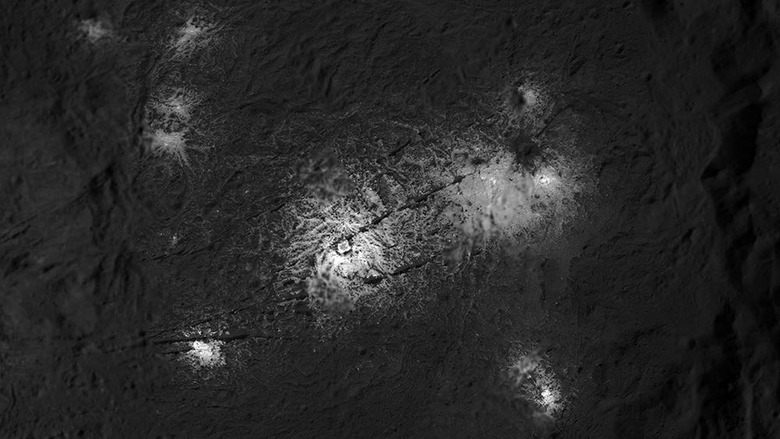Ceres' Salty Bright Spots Revealed In Stunning Detail
It has been a couple years since we last heard anything interesting about dwarf planet Ceres' mysterious bright spots. First spied in early 2015 as tiny specks of bright light, NASA published progressively larger images of these bright specks over many months, each giving us a slightly better glimpse of the shiny regions. This week brings a new batch of these images, ones that show the spots with striking detail.
As with previous images, the new photos were captured by NASA's Dawn spacecraft, which was only about 22 miles from the surface when the images were taken. In them, we see multiple bright spots contrasting with the overall dark landscape, each revealing the textured surface within. Unfortunately, the images come near the end of Dawn's life.

Though the bright spots had initially stumped researchers, it was soon indicated that either ice or salt was likely responsible. That was later narrowed down to salt, the explanation NASA again points toward. According to the space agency, the shiny areas are composed primarily of sodium carbonate and ammonium chloride that form a "slushy brine."
The Dawn spacecraft has given researchers a close look at these areas, but that's not all. NASA says its spacecraft is wrapping up its second extended mission at Ceres, spending its time capturing images at a distance of only about 22 miles from the dwarf planet's surface. As well, Dawn is collecting neutron spectra, gamma ray, visible/IR spectra, and gravity information about Ceres. NASA has set its sights primarily on the Urvara and Occator craters.
Unfortunately, only a couple months remain in the mission. According to NASA, the Dawn spacecraft will run out its primary fuel in the August – October timeframe, after which point the thrusters will no longer be able to maintain the spacecraft's orientation. This will leave the spacecraft in Ceres' orbit, but it will no longer be able to communicate with researchers on Earth.
SOURCE: NASA
